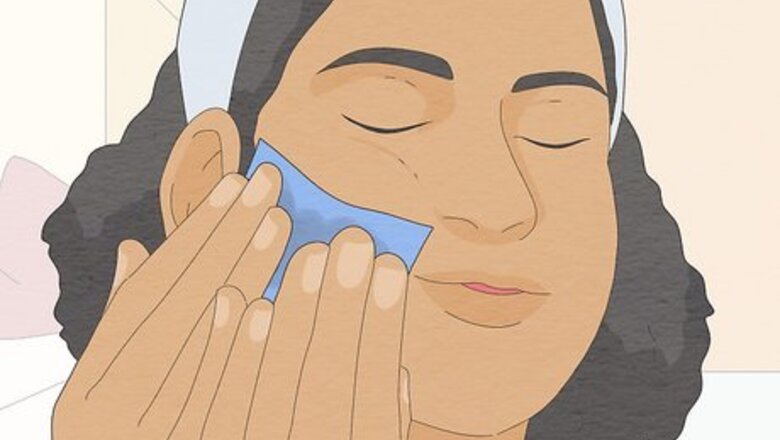
views
Employing Quick Fixes
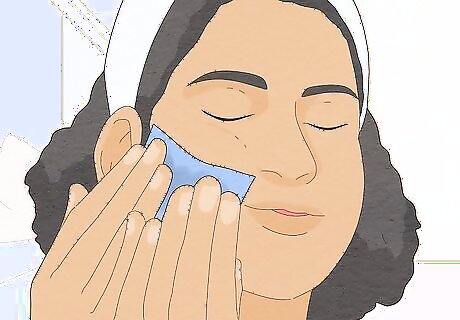
Use blotting paper. Blotting paper is smooth, absorbent paper that removes oil without taking off your makeup. It's the most convenient quick fix for an oily face: simple take out a sheet and blot your forehead, nose, chin, and any other oily spots. You can buy blotting paper at most drugstores, but if you don't have it on hand, try one of these handy substitutes: Tissue paper. Use the plain white kind that that you use to wrap presents. Avoid getting colored tissue paper, since it can bleed on your skin. Cigarette papers. These are made from smooth paper similar to blotting paper. They're usually cheaper than blotting papers, too. Toilet seat covers. In a pinch, you can use a clean paper toilet seat cover as blotting paper. Cut it into smaller squares and blot away.
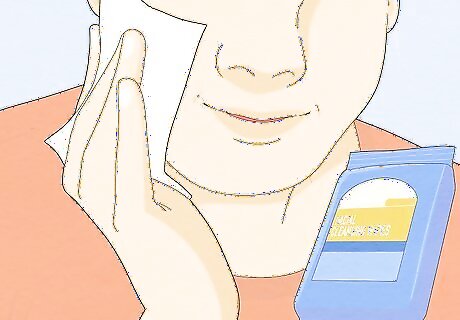
Use disposable face cleansing pads. These are convenient when you're on the go and just have to wipe away the oil on your face. Since cleansing pads are wet and they contain soap, use this solution when you aren't wearing makeup - cleansing pads will take it right off. If possible, splash your face with cold water after using a pad to remove the trace amounts of soap.
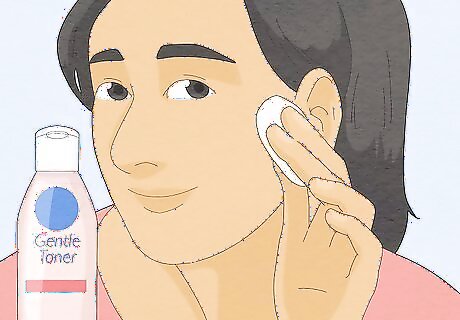
Swab on some toner. Use a cotton ball to smooth some toner over the oily areas of your face. Toner takes off the oil and tightens the skin, temporarily cleaning your face. You can buy a bottle of toner at the beauty supply store or drugstore, or make your own using the following recipe: Put 1/2 cup apple cider vinegar in a jar. Add 1 cup of filtered or distilled water. Shake the jar and use a cotton ball to apply this natural toner to your skin as often as you want. Dr. Mark Lees Dr. Mark Lees, Skin Care Expert Remove excess oil and dirt from the skin, followed by a toner to restore the skin's pH balance. Also, use a moisturizer that is oil-free or non-comedogenic, which means it will not clog the pores.
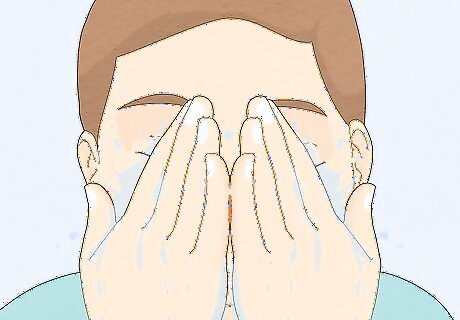
Splash water on your face. Splashing some cold water on your face will tighten up your pores and make your face feel fresher. Pat it dry with a soft towel when you're finished. This is a good quick solution no matter where you find yourself with an oily face.
Keeping Your Face From Getting Oily
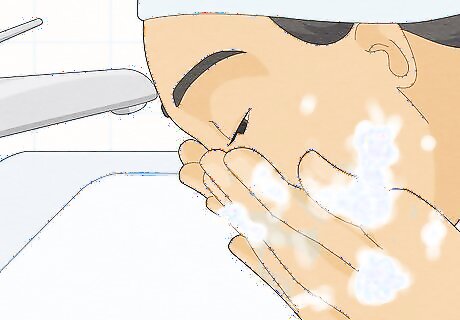
Wash your face less often. The oil our faces naturally produce is called sebum. It's a beneficial oil that protects our skin and keeps it flexible and healthy. Washing it away too frequently results in your pores producing more oil to make up for what was lost. This overproduction is what leads to the appearance of oily skin. To prevent this from happening: Wash your face (with oil) just once a day. If you need to remove oil in between washings, use blotting paper instead of washing your face. Moisturize your face after washing it. If your face gets too dry, your pores will produce oil to make up for it. It may take a few days of using this new routine for your face to balance out.
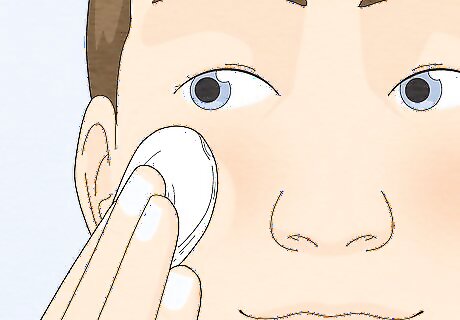
Remove your makeup every night. Wash your face every night before going to bed. It's important to remove makeup and the dust from the day before you go to sleep at night, so that your pores don't get clogged. There's no need to wash it again in the morning.
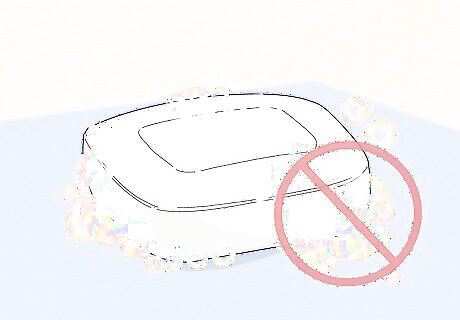
Don't use drying products. Using soaps and facial cleansers in an attempt to get rid of your face's oil will cause your pores to produce extra to make up for it. Wean yourself off of your soap-based facial cleansers, especially those containing harsh cleaning agents like sodium laurel sulfate. It's better to wash your face with plain water than to use a facial cleanser. Use the oil cleansing method when your face needs a deep cleansing. If you're worried about acne, use tea tree oil and other natural methods instead of resorting to harsh cleansers, which tend to irritate acne more.
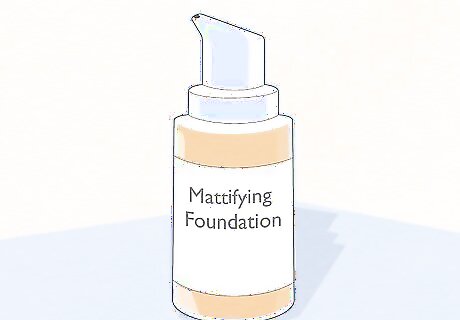
Use makeup that won't cause your face to produce more oil. Choosing your makeup wisely is a big part of oil control. Caking on the makeup isn't going to solve the problem, so use it sparingly. Go for matte foundation and mineral powders to help absorb the oil and keep your face from looking shiny.
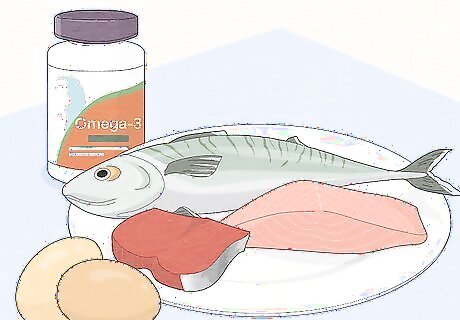
Watch what you eat. While more research is needed, some evidence suggests that what you eat can play a role in the development of excess oil and acne. In particular, foods that encourage your body to produce insulin-like growth factor 1 (IGF-1) may also cause an increase in sebum. Foods that increase IGF-1 levels include dairy products, like milk and cheese, and foods with a high glycemic index (GI), like breads, cereals, pastas, refined grains, potatoes, melons, pineapples, pumpkins, and snack foods. On the other hand, foods rich in omega-3 fatty acids may help clear your complexion. These include fatty fish, pastured eggs, soy products, spinach, nuts, and wild rice.













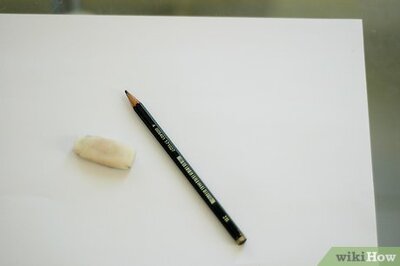
Comments
0 comment